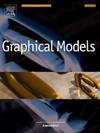HammingVis:在汉明空间理解量子计算错误结果的可视化分析方法
IF 2.2
4区 计算机科学
Q2 COMPUTER SCIENCE, SOFTWARE ENGINEERING
引用次数: 0
摘要
先进的量子计算机有能力进行实用的量子计算,以解决经典计算机难以解决的特定问题。然而,这些计算机容易受到噪声的影响,导致结果出现无法预期的错误,从而降低了它们的可信度。为了应对这一挑战,我们提出了 HammingVis,这是一种可视化分析方法,有助于识别和理解量子结果中的误差。鉴于这些误差在汉明空间中表现出潜在的结构模式,我们引入了两种图形可视化方法,从不同角度揭示这些模式。一种突出了误差的整体结构,另一种则侧重于重要子空间内误差的影响。我们进一步开发了一个原型系统,用于在汉明空间内交互式探索和辨别正确结果。我们提出了一种新颖的设计,用于区分错误结果和正确结果之间的邻域模式。我们通过涉及两种经典量子算法结果数据的案例研究,证明了我们方法的有效性。本文章由计算机程序翻译,如有差异,请以英文原文为准。
HammingVis: A visual analytics approach for understanding erroneous outcomes of quantum computing in hamming space
Advanced quantum computers have the capability to perform practical quantum computing to address specific problems that are intractable for classical computers. Nevertheless, these computers are susceptible to noise, leading to unexpectable errors in outcomes, which makes them less trustworthy. To address this challenge, we propose HammingVis, a visual analytics approach that helps identify and understand errors in quantum outcomes. Given that these errors exhibit latent structural patterns within Hamming space, we introduce two graph visualizations to reveal these patterns from distinct perspectives. One highlights the overall structure of errors, while the other focuses on the impact of errors within important subspaces. We further develop a prototype system for interactively exploring and discerning the correct outcomes within Hamming space. A novel design is presented to distinguish the neighborhood patterns between error and correct outcomes. The effectiveness of our approach is demonstrated through case studies involving two classic quantum algorithms’ outcome data.
求助全文
通过发布文献求助,成功后即可免费获取论文全文。
去求助
来源期刊

Graphical Models
工程技术-计算机:软件工程
CiteScore
3.60
自引率
5.90%
发文量
15
审稿时长
47 days
期刊介绍:
Graphical Models is recognized internationally as a highly rated, top tier journal and is focused on the creation, geometric processing, animation, and visualization of graphical models and on their applications in engineering, science, culture, and entertainment. GMOD provides its readers with thoroughly reviewed and carefully selected papers that disseminate exciting innovations, that teach rigorous theoretical foundations, that propose robust and efficient solutions, or that describe ambitious systems or applications in a variety of topics.
We invite papers in five categories: research (contributions of novel theoretical or practical approaches or solutions), survey (opinionated views of the state-of-the-art and challenges in a specific topic), system (the architecture and implementation details of an innovative architecture for a complete system that supports model/animation design, acquisition, analysis, visualization?), application (description of a novel application of know techniques and evaluation of its impact), or lecture (an elegant and inspiring perspective on previously published results that clarifies them and teaches them in a new way).
GMOD offers its authors an accelerated review, feedback from experts in the field, immediate online publication of accepted papers, no restriction on color and length (when justified by the content) in the online version, and a broad promotion of published papers. A prestigious group of editors selected from among the premier international researchers in their fields oversees the review process.
 求助内容:
求助内容: 应助结果提醒方式:
应助结果提醒方式:


